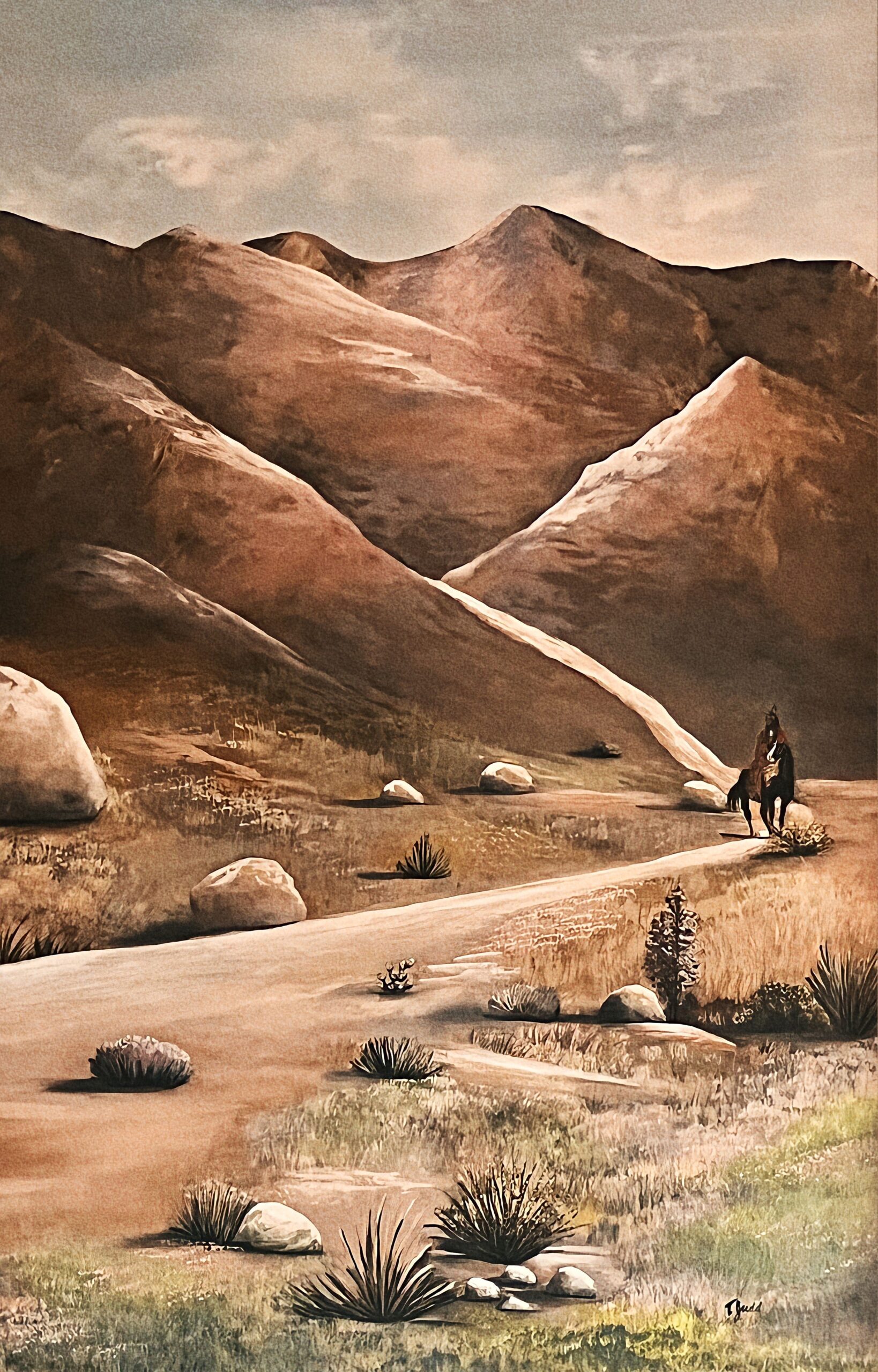
Description
Trail of Tears by Trese Judd
Introduction
In the hush of twilight, where shadows stretch across the land, “Trail of Tears” emerges—a canvas that bears witness to history, pain, and the indomitable spirit of a people. Contemporary artist Trese Judd has woven sorrow and resilience upon canvas, inviting you to step into a chapter of America’s past.
The Desert’s Embrace:
Imagine standing at the edge of a vast desert—a winding trail etched into the earth. The sand, gritty and unforgiving, holds the weight of countless footsteps. The mountains, stoic and ancient, cradle the trail like guardians. You can almost feel the sun’s heat, the dryness seeping into your bones.
A Solitary Figure:
Along the trail, a lone rider on horseback emerges—a silhouette against the horizon. Their shoulders bear the weight of generations—their gaze fixed on a distant promise. Is it hope or resignation that drives them forward? You can almost hear the creak of leather, the rhythm of hooves.
Colors of Sorrow:
The palette is earthy—warm ochres, burnt siennas, and muted greens. The sky, a canvas of fading blues, mirrors the ache within. The rocks and shrubs cling to life, their roots seeking sustenance in barren soil. You can almost taste the dust, the salt of tears.
The Trail’s Echoes:
“Trail of Tears” commemorates the forced removal of Native American tribes—their ancestral lands exchanged for desolation. It speaks of loss, resilience, and the endurance of memory. You can almost hear the whispered stories, the songs of elders.
Where to Display:
This painting is very large and demands reverence—a space that honors its narrative. Consider these placements:
- The Study: Let it inspire research, empathy, and understanding.
- The Gallery Wall: Hung alongside other historical pieces, it becomes a conversation starter.
- The Library: Imagine it near volumes that chronicle forgotten voices.
The Invitation:
As you gaze upon Trail of Tears, let your senses intertwine. Feel the weight of history, taste the bitterness of injustice, smell the sagebrush carried by the wind. Let it remind you that art is not just beauty—it’s a mirror reflecting our shared humanity.
Own a Testament:
This painting is more than pigment and canvas; it’s a plea for remembrance. It’s a call to honor those who walked this trail—their tears absorbed by the land, their spirits carried by the wind.
Disclaimer: The emotions and sensory experiences described above are purely artistic interpretations. Individual reactions may vary.
Details
| Dimensions | 32 × 44 in |
|---|---|
| Canvas Form | |
| Orientation | |
| Setting | |
| Subject Matter | |
| Theme |
FAQ
All artworks available for purchase on this website are distinct, original pieces crafted by contemporary artist Trese Judd.
Regrettably, we do not offer prints of Trese Judd’s artwork. However, Trese is committed to maintaining affordability in her original pieces, often providing options that are more accessible compared to those of many other artists.
Since Trese creates only one-of-a-kind, original artwork, we do not provide customization options for her paintings. However, we do offer commissioned pieces based on the submission of a photograph you would like Trese to turn into a painting. In this case, you can certainly request customizations.
Currently, and for the foreseeable future, the only products available on this website are physical, original Trese Judd pieces. This means we will not be selling reproductions of original paintings, NFTs, or digital copies.
Absolutely. We have established and will continually uphold all essential protocols to provide a secure checkout experience for our customers. Your security remains our top priority, and we are dedicated to fostering integrity and transparency throughout our interactions with customers.
